DOMESTIC LUMBER
Choose a species to learn more:
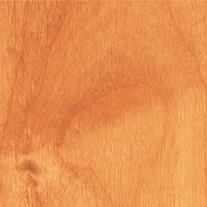
Alder
About Alder:
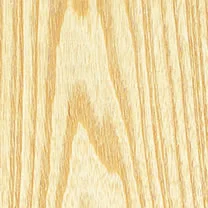
Ash
About Ash:

Basswood
About Basswood:
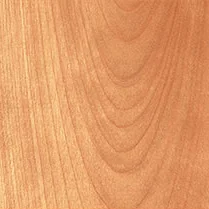
Birch
About Birch:
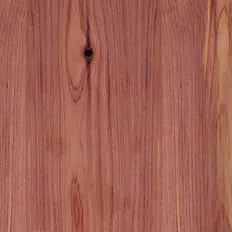
Cedar, Aromatic
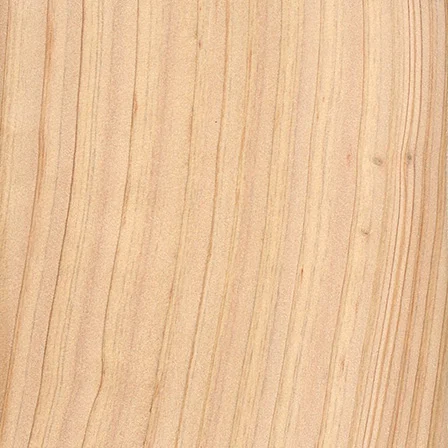
Cedar, Atlantic White
About Cedar, Atlantic White:

Cedar, Western Red
About Cedar, Western Red:
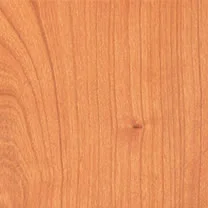
Cherry
About Cherry:

Cypress, Sinker

Cypress, Yellow

Fir, Douglas

Hickory
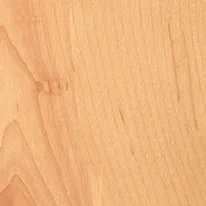
Maple, Hard

Maple, Soft
About Maple, Soft:
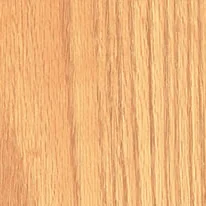
Oak, Red
About Oak, Red:
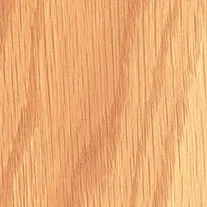
Oak, White
About Oak, White:
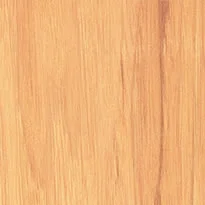
Pecan

Pine, Eastern White
About Pine, Eastern White:

Pine, Ponderosa

Pine, Southern Yellow

Spruce

Yellow Poplar

Redwood
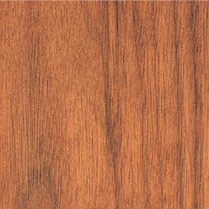
Walnut
DOMESTIC
LUMBER
Choose a species to learn more:

Alder
About Alder:
Alder domestic lumber, sourced from the western slopes of the Cascade Mountains in Washington and Oregon, is a lightweight hardwood known for its light reddish-brown color, fine texture, and grain pattern resembling Cherry and Soft Maple. Its workability and visual appeal make it a popular choice for a variety of applications, including furniture, kitchen cabinets, stile and rail doors, and millwork. Alder is particularly valued for its versatility, with upper-grade options offering a Cherry-like appearance and lower grades featuring a rustic charm. Sold under unique grading standards—such as Superior, Superior One Face, Premium Frame/Rustic, and Cabinet—Alder accommodates diverse project needs and is available in various thicknesses. Its ability to take stains and finishes well adds to its flexibility, while its fast growth and regeneration make it an environmentally friendly choice. Affordable, attractive, and easy to work with, Alder remains a favorite for both professional woodworkers and DIY enthusiasts.

Ash
About Ash:
Ash domestic lumber, sourced from North American ash trees (Fraxinus genus), is a highly valued hardwood known for its strength, stability, and attractive grain. Typically sorted as “white” Ash with a bright, clean color and medium texture, it features a straight, open grain that finishes beautifully. A variant known as Natural or Brown Ash, also called Cabinet Ash, offers a light brown to tan color with similar grain characteristics. Renowned for its stability, Ash is less prone to twisting and cupping, making it ideal for cabinetry, moulding, and furniture. It’s also a favorite for musical instrument construction, particularly in 8/4 cuts for guitar body stock. Easy to work with and capable of taking stains and finishes well, Ash is widely used in flooring, sports equipment, and decorative applications. Available in various thicknesses and grades, including FAS1F and #1 Common, White and Natural Ash continue to be a versatile and reliable choice in woodworking projects across industries.

Basswood
About Basswood:
Basswood is a lightweight hardwood, approximately half as dense as Oak, known for its smooth texture and creamy white appearance. It is highly valued for its exceptional workability, making it ideal for detailed woodworking, carving, and turning projects. Although soft compared to other hardwoods, Basswood holds fine details well and is easy to work with using both hand tools and machines. It is often used in place of or alongside Hard Maple, Soft Maple, and Birch for its aesthetic appeal and versatility. Common applications include moulding, cabinetry, and interior shutters, where it is favored for both paint-grade and stain-grade finishes. Basswood is also popular among carvers and sculptors due to its soft nature and smooth grain. Typically available in Select & Better and #1 Common grades, Basswood is abundant in North America, particularly in the Midwest and Northeast, making it an affordable and sustainable option for a wide range of woodworking projects.

Birch
About Birch:
Birch domestic lumber, primarily sourced from Yellow Birch (Betula alleghaniensis) and White Birch (Betula papyrifera) in North America, is a dense hardwood known for its stability and strength. It features a closed, tight grain that makes it a durable material but can present challenges during machining. The wood is typically light tan to yellowish-brown, often referred to as “Yellow Birch,” with variations like White Birch (sapwood) and Red Birch (heartwood) available. Southern Birch may also exhibit mineral flecking. Due to the relatively small size of birch trees, long lengths and wide widths are less common. Birch is predominantly used for producing veneer in the plywood industry, as well as in the manufacture of furniture and cabinetry. It is typically available in Select & Better and #1 Common grades, depending on quality, with Select & Better being the highest grade. While prized for its strength and attractive appearance, its density requires careful machining.

Cedar, Aromatic
About Cedar, Aromatic:
Aromatic Cedar, also known as Western Red Cedar or Eastern Red Cedar, is a softwood known for its distinctive fragrance, which is pleasing to humans but offensive to moths, making it highly effective for repelling insects. The wood is typically knotty and features a rich red-brown color, with pale tan to white sapwood. It usually measures around 5 inches in width and 8 feet in length, with a fine, straight grain, occasionally accented by knots or wavy patterns. Aromatic Cedar is prized for its durability, offering natural resistance to rot, decay, and pests, making it ideal for both indoor and outdoor applications. It is commonly used in the construction of cedar chests, closet linings, furniture, and interior paneling, as well as outdoor structures like fences and decks. Available in 4/4 thickness and #1 Common grade, Aromatic Cedar is widely accessible and sought after for its combination of beauty, fragrance, and functional properties, particularly in storage solutions and decorative woodwork.

Cedar, Atlantic White
About Cedar, Atlantic White:
Atlantic White Cedar (Chamaecyparis thyoides) is a valued domestic softwood native to the northeastern U.S., known for its light reddish-brown heartwood and pale yellow-brown to almost white sapwood, which are clearly demarcated. The wood has a straight grain, fine uniform texture, and is easy to work with, whether using hand or machine tools, making it ideal for fine woodworking projects. With its high decay resistance and aromatic cedar-like scent, Atlantic White Cedar is prized in outdoor applications such as boat building, siding, shingles, and construction lumber, especially in humid or coastal regions. Its durability and resistance to the elements, combined with its attractive appearance, also make it a popular choice for carving, furniture, and interior applications like closets. Available in various thicknesses, grades, and special order patterns, Atlantic White Cedar is both versatile and sustainable, with availability varying depending on regional conservation efforts.

Cedar, Western Red
About Cedar, Western Red:
Western Red Cedar is a lightweight, durable wood native to the Pacific Northwest, prized for its natural resistance to insects, rot, and moisture. Its reddish-brown heartwood oxidizes to a dull brown when exposed to the sun, adding to its rustic charm. Known for its workability, the wood stains, machines, and seasons well, making it perfect for a variety of exterior applications such as siding, decking, trim boards, and fencing. Rustic hand-split Western Red Cedar post-and-rail fences are especially popular for their attractive texture and resistance to decay. Available in various forms like boards, timbers, split rails, posts, bevel siding, and shakes, Western Red Cedar is highly valued for both its aesthetic appeal and durability under harsh weather conditions. It’s also sustainable, often harvested responsibly to ensure long-term availability. This versatile lumber is ideal for outdoor structures, furniture, and landscaping, offering lasting beauty and functionality.

Cherry
About Cherry:
Cherry domestic lumber, primarily sourced from the Northeastern United States, is highly valued for its fine grain, rich color, and excellent workability. The wood is known for its tight, slightly swirling grain and smooth texture, making it easy to machine and finish beautifully. Its heartwood is a rich reddish-brown, while the sapwood is a lighter yellow, though the steaming process can minimize this contrast for a more uniform appearance. Cherry has long been a favored material in the cabinet and furniture industries and is also popular for wall paneling, flooring, and retail fixtures due to its natural beauty. Available in various thicknesses in Select & Better and #1 Common grades, cherry domestic lumber is a top choice for high-end woodworking projects, prized for both its durability and the way it naturally darkens over time.

Cypress, Sinker
About Cypress, Sinker:
Sinker Cypress is a unique type of wood derived from logs that were felled and then sunk to the bottom of rivers or lakes. After being submerged for years, the sapwood rots away, leaving behind the heartwood, which is a rich reddish-brown color and highly resistant to the elements. This process results in wood with a tight, dense grain that is prized for its durability and aesthetic appeal. Sinker Cypress is an excellent choice for exterior applications such as bevel siding, where its natural color, similar to Teak, enhances the look of any project. It is commonly available in Select & Better grade and in various thicknesses, with special orders available for specific sizes and widths. Its versatility makes it suitable for other applications as well, including decking, fencing, and fine furniture, offering both beauty and long-lasting performance.

Cypress, Yellow
About Cypress, Yellow:
Cypress, particularly Yellow Cypress, is a versatile and durable wood commonly used in both indoor and outdoor applications. It is light tan with a slight orange cast and is known for its resistance to decay, moisture, and insect damage, making it ideal for environments that require weather-resistant materials. While Yellow Cypress is more readily available than the premium Sinker Cypress, it still offers excellent workability, machining, and finishing. It is frequently used in outdoor projects like fencing and decking, as well as for furniture, cabinetry, and paneling indoors. Available in various grades such as Select & Better and #2 Common, Yellow Cypress is suited for a range of fine and utilitarian woodworking needs. In comparison, Yellow Domestic Lumber, which includes Yellow Pine and Yellow Poplar, is commonly used for construction and interior applications. Yellow Pine, with its strength and durability, is often used for framing and flooring, while Yellow Poplar, being softer, is preferred for furniture and cabinetry. Yellow Cypress stands out for its resistance to weather and decay, while Yellow Pine is known for its structural strength and Yellow Poplar for its ease of machining and finishing.

Fir, Douglas
About Fir, Douglas:
Douglas Fir domestic lumber, sourced from the abundant Pseudotsuga menziesii tree native to North America, is one of the strongest and hardest softwoods in the region, known for its remarkable dimensional stability that prevents warping and twisting over time. It has a light rosy color with a straight, handsome grain pattern, which darkens to a richer red hue when exposed to light. While its tough fibers can be challenging to work with by hand, it responds well to sharp power tools, yielding a smooth and glossy surface. This wood is widely used in construction for structural framing and decorative beams, as well as in the millwork industry for doors, windows, and moulding. Designers also favor it for high-end furniture and cabinetry due to its strength and aesthetic appeal. Available in various thicknesses and grades, Douglas Fir is a versatile material suitable for both heavy-duty applications and fine craftsmanship.

Hickory
About Hickory:
Hickory domestic lumber, sourced from species like Shagbark and Shellbark Hickory, is one of the densest and toughest hardwoods, known for its strength, durability, and relatively closed grain. Its color ranges from reddish-brown to light tan, and it is often grouped with Pecan, as the two are considered interchangeable in grading due to their similar characteristics. With a high Janka hardness rating of around 1,820 lbf, hickory is widely used in applications that require toughness, such as tool handles, cabinetry, furniture, and flooring. It is also a popular choice for making drumsticks and other musical instruments due to its shock resistance. Available in various thicknesses and typically graded as Select & Better or #1 Common, hickory is valued for its versatility and robustness, making it a preferred material for both commercial and consumer woodworking projects.

Maple, Hard
About Maple, Hard:
Hard Maple (Acer saccharum) is a dense, durable hardwood widely valued for its strength and fine grain. Typically a pale tan color, it can range from off-white to light yellow with subtle reddish or golden hues. The wood is sorted into three categories at sawmills: #1 & #2 White, which offers a uniform white appearance and commands a premium price; Unselected, which combines both the lighter sapwood and darker heartwood within the same board; and Brown, a byproduct used in paint-grade or dark stain applications. Hard Maple is incredibly versatile and used in a variety of applications, including furniture, flooring, cutting surfaces (such as butcher blocks), and fixtures. It is especially prized for flooring in high-traffic areas, such as basketball courts and bowling alleys, due to its toughness. Available in various thicknesses and grades, such as Select & Better and #1 Common, Hard Maple remains a go-to choice for both functional and decorative woodworking projects.

Maple, Soft
About Maple, Soft:
Soft Maple, derived from species like Red Maple (Acer rubrum), is a medium-density wood with a fine texture and close grain. It shares many characteristics with Hard Maple but is less dense and strong, making it easier to machine and finish. The heartwood ranges from pale to reddish-gray, while the sapwood is white to off-white. Soft Maple is often sorted to yield products with 80% white one-face boards, with premium options offering 100% white one-face. It is primarily used in cabinetry, furniture, fixtures, and moulding profiles for both paint and stain applications. Available in various thicknesses and grades (such as Select & Better and #1 Common), Soft Maple is valued for its workability and attractive appearance, making it a popular choice in woodworking.

Oak, Red
About Oak, Red:
Red Oak is one of the most well-known and widely used hardwoods in the United States, prized for its versatility, affordability, and attractive appearance. Its color ranges from light pink to light red, with a coarse texture and straight grain often accentuated by distinctive medullary rays, especially in quarter-sawn cuts. The quality and color of red oak are influenced by its region of origin, with Northern-sawn oak being the most consistent and desirable. While very hard, red oak is easy to machine, stain, and finish, with its open grain often eliminating the need for grain fillers during finishing. This durable hardwood is a favorite for furniture, cabinetry, flooring, moldings, doors, and windows, though its moderate resistance to rot makes it better suited for interior use unless properly treated. Widely available in grades like FAS1F and #1 Common, with options for rift and quarter-sawn cuts in select thicknesses, red oak remains a go-to material for both professional woodworkers and DIY enthusiasts.

Oak, White
About Oak, White:
White Oak is a premier domestic hardwood, prized for its strength, durability, and timeless beauty. Denser and more evenly textured than Red Oak, White Oak is easier to work with and finish, making it a versatile choice for both functional and decorative applications. Its color ranges from light gray to very light tan, with straight, coarse grain patterns that are especially striking in rift and quarter sawn cuts. Abundant tyloses in its pores provide exceptional resistance to water and decay, allowing for use in exterior applications like truck and trailer beds. White Oak is a favorite for architectural millwork, furniture, and flooring, valued for its durability and elegant appearance. Readily available in various grades such as FAS1F and #1 Common, and offered in specialty cuts, White Oak is a reliable, aesthetically pleasing material for a wide range of woodworking and construction projects.

Pecan
About Pecan:
Pecan domestic lumber, sourced from the native North American pecan tree (Carya illinoinensis), is a medium-density hardwood often grouped with hickory due to their similar properties and indistinguishable grading. It features a closed grain and an attractive appearance, with colors ranging from light tan to reddish-brown, making it suitable for both clear finishes and stains. Known for its exceptional hardness (Janka rating of 1,820), pecan is highly durable but can be challenging to work with, requiring sharp tools and careful handling. Its strength and beauty have made it a popular choice for hardwood flooring, fine furniture, cabinetry, tool handles, sporting goods, and decorative veneers. Pecan lumber is widely available in various thicknesses and graded as FAS1F and #1 Common, ensuring quality for a range of applications. Sustainably harvested and versatile, pecan is valued for both its utility and aesthetics in woodworking projects.

Pine, Eastern White
About Pine, Eastern White:
Eastern White Pine is a soft, lightweight wood with a pale yellow to light cream color, known for its fine grain and excellent workability. It machines and glues well, making it a favorite among woodworkers. Available in different grades, such as D Select, which contains minimal small knots, and Furniture Grade, which has a greater number of large but tight knots, it offers versatility for various uses. Furniture Grade is particularly sought after for its characteristic “knotty pine” look. Graded by the Northeastern Lumber Manufacturers Association (NeLMA) since 1933, the NeLMA grade stamp is a symbol of quality and excellence. Eastern White Pine is commonly used in furniture, cabinetry, millwork, trim, and construction, particularly in non-load-bearing applications. Its aesthetic appeal, ease of finishing, and affordable price make it a popular choice for rustic or traditional designs, though its softness requires care to avoid dents and scratches.

Pine, Ponderosa
About Pine, Ponderosa:
Ponderosa Pine (Pinus ponderosa) is a lightweight and stable softwood known for its straight grain and even texture, making it highly machinable and easy to work with. The heartwood is brown to light tan, while the sapwood is white, giving the wood an attractive appearance. It is widely used in the millwork industry, particularly in the manufacture of wood windows, doors, and moulding, thanks to its stability and ease of finishing. Additionally, Ponderosa Pine is popular for framing, furniture, and cabinetry. The wood is available in various thicknesses and grades, including C & Better and Moulding grades, as well as 1×12 S4S boards in #2 Common and #3 Common grades for more general construction needs. Its versatility, workability, and availability make it a popular choice for both decorative and functional woodworking projects.

Pine, Southern Yellow
About Pine, Southern Yellow:
Southern Yellow Pine (SYP) is a collective term for several pine species native to the Southeastern United States, including Loblolly, Longleaf, Slash, and Shortleaf pines. The wood is characterized by its coarse texture, pronounced growth rings, and typically brownish-yellow color, sometimes with an orange tint. Yellow Pine is generally soft and easy to work with, though it can be as dense as oak, depending on where it’s grown. It is most commonly used in the building industry for structural components like studs, beams, and framing, but also finds applications in tongue-and-groove flooring, beaded ceilings, and bevel siding. Southern Yellow Pine is available in various sizes and grades, such as 1×4 thru 1×12 S4S in C & Better and #2 grade, as well as 2×6 thru 2×12 S4S in C & Better grade, with options for kiln-dried after treatment (KDAT) and rough lumber in different thicknesses. Its versatility, strength, and ease of treatment make it a popular choice for both structural and decorative uses.

Spruce
About Spruce:
Spruce domestic lumber, sourced from species like White Spruce, Red Spruce, and Black Spruce found throughout the northern United States and Canada, is often traded collectively as Eastern Spruce. Known for its lightweight yet strong properties, spruce offers good strength relative to its weight. The wood has a uniform texture, with light tan to reddish-brown heartwood and off-white sapwood, making it easy to work with. Spruce is widely used in structural framing for components like studs, rafters, and beams, as well as in exterior painted trim. It is also a popular choice for hobbyists and is commonly found in #2 Grade for general construction. While relatively soft, it is versatile and ideal for applications such as furniture making, plywood production, and even certain musical instruments like pianos and guitars.

Yellow Poplar
About Yellow Poplar:
Yellow Poplar (Liriodendron tulipifera), also known as Tulipwood, is a highly valued hardwood native to the eastern United States, prized for its abundance, versatility, and ease of use. The wood features a light to dark green heartwood with creamy sapwood and a straight, fine grain, making it ideal for both paint- and stain-grade applications. Yellow Poplar is reasonably stable, machines and glues well, and takes finishes smoothly, making it perfect for furniture, cabinetry, molding, and millwork. It is commonly used in paint-grade cabinet doors and various molding applications. Available in FAS1F and #1 Common grades in a range of thicknesses, Yellow Poplar is widely accessible and considered a sustainable choice due to its fast growth and abundant supply in U.S. forests. Its combination of strength, workability, and aesthetic appeal makes it a popular option for both residential and commercial projects.

Redwood
About Redwood:
Redwood domestic lumber, cut from the heartwood of Sequoia sempervirens trees, is highly valued for its rich reddish-brown color, strength, and natural resistance to decay, termites, and insects. Manufactured in two Humboldt Sawmills, redwood timbers offer a consistent and uniform product, unlike cedar, which is sourced from multiple mills, resulting in more variation in quality. In strength tests, redwood has been shown to be 30% stronger than same-sized cedar timbers. These durable timbers are ideal for both indoor and outdoor applications, including arbors, barns, beams, framing, headers, posts, rafters, shade structures, and trellises. Available in various thicknesses and grades, redwood is a sustainable and versatile choice, providing long-lasting materials for decking, fences, garden furniture, fine woodworking, and more. With responsible harvesting practices in place, redwood is a reliable and beautiful option for a wide range of construction and design projects.

Walnut
About Walnut:
Walnut domestic lumber, primarily sourced from the Black Walnut (Juglans nigra), is a highly sought-after hardwood known for its rich color, durability, and beautiful grain patterns. The wood’s heartwood ranges from brown to black, while the sapwood is almost white, and walnut is one of the few woods that lightens with age, rather than darkening. Most commercially available walnut is steamed to blend the heartwood and sapwood, creating a more uniform color throughout the board. Walnut is valued by woodworkers for its stability, workability, and ease of machining and gluing, making it ideal for fine furniture, cabinetry, and gun stocks. Its straight grain, along with occasional waves or curls, adds to its aesthetic appeal. Typically available in FAS1F and #1 Common grades, walnut is used extensively in high-end furniture and woodworking projects, where its lasting beauty and strength shine.
